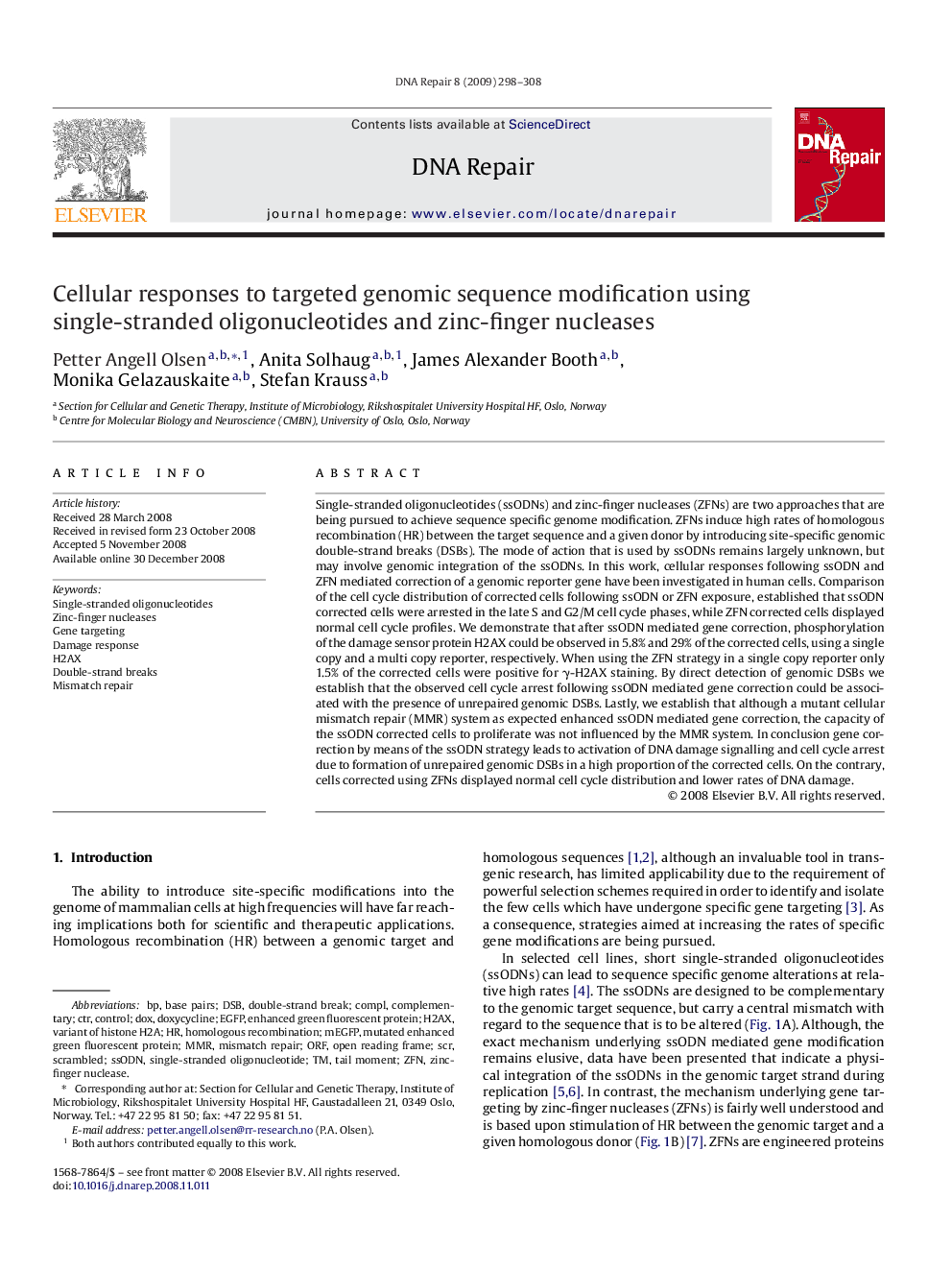| کد مقاله | کد نشریه | سال انتشار | مقاله انگلیسی | نسخه تمام متن |
|---|---|---|---|---|
| 1980639 | 1061870 | 2009 | 11 صفحه PDF | دانلود رایگان |

Single-stranded oligonucleotides (ssODNs) and zinc-finger nucleases (ZFNs) are two approaches that are being pursued to achieve sequence specific genome modification. ZFNs induce high rates of homologous recombination (HR) between the target sequence and a given donor by introducing site-specific genomic double-strand breaks (DSBs). The mode of action that is used by ssODNs remains largely unknown, but may involve genomic integration of the ssODNs. In this work, cellular responses following ssODN and ZFN mediated correction of a genomic reporter gene have been investigated in human cells. Comparison of the cell cycle distribution of corrected cells following ssODN or ZFN exposure, established that ssODN corrected cells were arrested in the late S and G2/M cell cycle phases, while ZFN corrected cells displayed normal cell cycle profiles. We demonstrate that after ssODN mediated gene correction, phosphorylation of the damage sensor protein H2AX could be observed in 5.8% and 29% of the corrected cells, using a single copy and a multi copy reporter, respectively. When using the ZFN strategy in a single copy reporter only 1.5% of the corrected cells were positive for γ-H2AX staining. By direct detection of genomic DSBs we establish that the observed cell cycle arrest following ssODN mediated gene correction could be associated with the presence of unrepaired genomic DSBs. Lastly, we establish that although a mutant cellular mismatch repair (MMR) system as expected enhanced ssODN mediated gene correction, the capacity of the ssODN corrected cells to proliferate was not influenced by the MMR system. In conclusion gene correction by means of the ssODN strategy leads to activation of DNA damage signalling and cell cycle arrest due to formation of unrepaired genomic DSBs in a high proportion of the corrected cells. On the contrary, cells corrected using ZFNs displayed normal cell cycle distribution and lower rates of DNA damage.
Journal: DNA Repair - Volume 8, Issue 3, 1 March 2009, Pages 298–308